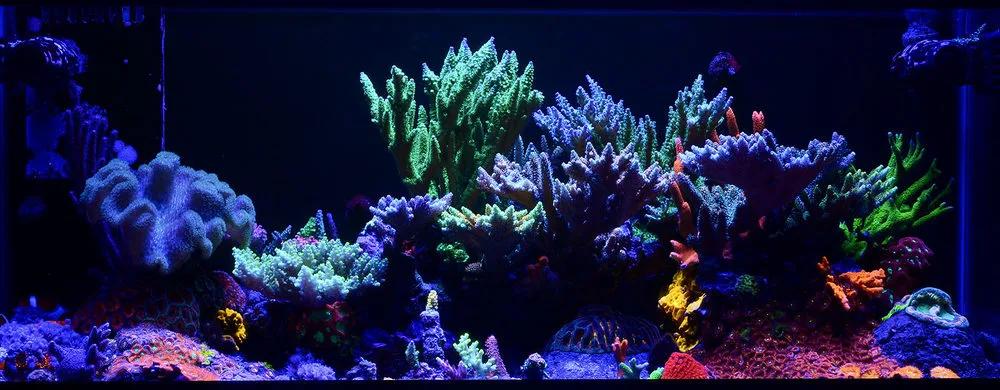Stunning 20-Gallon Reef Tank – xM3THODx's TOTM | NanoReef

Tank Specifications
Volume: 20 Gallons / 75 Liters
Dimensions (L × W × H):
30.0" ×
12.0" ×
12.0"
76.2cm ×
30.5cm ×
30.5cm
Equipment List
- Salt: None mentioned in the blog post
Frequently Asked Questions
What type of sand should I use for my reef tank?
For a reef tank, a fine to medium coarse sand is ideal. In this case, a 1/2 inch layer of such sand was used, which allows for adequate water movement and avoids trapping detritus.
How do I properly light a nano reef tank?
Using LED lighting, such as an Illumagic Blaze or similar fixture, is recommended for nano reef tanks. It provides the right spectrum and intensity needed for photosynthetic corals. Additionally, using supplemental lighting like ReefBrite LEDs can enhance coral colors and growth.
What type of filtration system should I use?
A combination of mechanical, chemical, and biological filtration is effective. Use mechanical filtration with filter floss, chemical filtration with activated carbon, and biological filtration with Marine Pure blocks and mud to process nitrates.
How can I control temperature in a nano reef tank?
A reliable heater, typically around 150 watts for a 20-gallon tank, is necessary. During heatwaves, additional cooling can be achieved with a small desk fan to maintain optimal temperature.
How should I set up my top-off system?
You can set up an auto top-off (ATO) system with two methods: using Kalkwasser in a controlled dosing system for alkalinity and calcium maintenance, and a traditional ATO using RO/DI water for evaporation compensation.
What is the feeding routine for fish in a reef tank?
Fish in a reef tank should be fed at least once daily, preferably twice. A mix of high-quality pellets and occasional frozen foods like Mysis or Brine shrimp ensures a balanced diet.
How do I feed my corals effectively?
Corals can be spot-fed using a turkey baster or broadcast-fed by turning off pumps for 10 minutes. A mix of products such as Benepets Benereef, PolypLab Reefroids, and Coral Frenzy can be used to target various types of corals.
What should my maintenance routine look like?
A good maintenance routine includes cleaning equipment and performing water changes regularly. For example, after heavy coral feeding, a microbubble scrub can help clean the tank, and you should perform a half-gallon water change the next day.
When and how should I test my water parameters?
Water testing should be carried out every 2-3 weeks for alkalinity with a Hanna Checker, and monthly for magnesium. Salinity should be checked weekly using a refractometer.
How do I maintain alkalinity and calcium levels?
Utilizing a 3-part dosing system like BRS or Tropic Marin’s Carbocalcium can help maintain steady alkalinity and calcium levels. It's important to adjust doses as coral demand increases.
What should I do if alkalinity levels drop too low?
If your alkalinity is dropping below the desired levels (7.4 dkH to an aim of 8-8.5 dkH), increase your dosing of alkalinity supplements gradually while monitoring coral response, ensuring not to cause any spikes.
What types of fish are suitable for a mixed reef tank?
Popular choices for a mixed reef setup include Ocellaris Clownfish, Royal Gramma, Blue Damselfish, and Six-Line Wrasse. Ensure compatibility and avoid aggressive species.
Which corals can thrive in a mixed reef environment?
Soft, LPS, and SPS corals can coexist in a mixed reef. Choosing varieties like Acan, Blastomussa, and various Zoanthids can contribute to biodiversity while maintaining a beautiful display.
How do I introduce new corals to my tank?
When introducing new corals, ensure to acclimate them slowly to match the tank's water parameters. Monitor their health closely for a few days post-introduction.